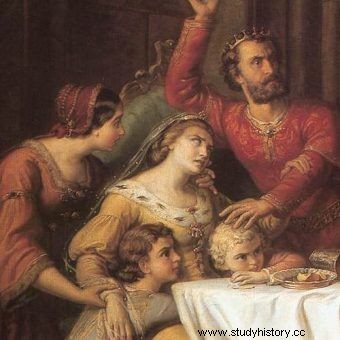
Elżbieta Łokietkówna
Elżbieta Łokietkówna
Queen of Hungary and regent of Poland from the Piast dynasty. She was the daughter of Władysław Łokietek and Jadwiga Kaliska. She was born as the first child of this couple conceived after the prince returned from exile. She grew up under the supervision of her mother and Poor Clares. At the age of 15, a few months after the coronation of Władysław the Short, she was married to the Hungarian king Charles Robert of the Anjou dynasty. In 1330, she fell victim to an attempt on her own and her family's life, as a result of which she lost four fingers on her right hand and gained the unflattering nickname of "the queen of the stumps".
In the face of her husband's progressive, deadly disease, she gained an ever greater share of power. Its position was even stronger during the reign of her son, Louis of Anjou. It was then that she gained the status of not only the most independent, but also the most influential of all Hungarian queens. During her husband's lifetime, she issued edicts regulating the high-ranking matters of the kingdom, and during the reign of her son, she used the main seal of the kingdom on his behalf. She took part in key games on the international political chessboard:she tried to put her son on the throne of Naples, engaged in disputes with the empire and papacy, acted as a mediator between neighboring powers.
Throughout his reign, she supported her brother, Casimir the Great, among other things, providing him with assistance in negotiations with the Czechs and Teutonic Knights, as well as military support needed to carry out the conquest of Red Ruthenia. As a result of a series of dynastic agreements, she was appointed by Kazimierz as his successor, in the event that he did not have legal sons. According to the Polish understanding of the law of inheritance, the throne after Kazimierz's death was to be taken over not by Elżbieta herself, but by her son, Ludwik. This also happened in 1370. Until 1375, and then for a few more months at the turn of 1376 and 1377, Elżbieta acted as a Polish regent and called herself the Polish queen. She was the only monarch in the history of Poland exercising independent power. She significantly contributed to the acceptance of the Košice privilege, which paved the way for the election of her granddaughter, Jadwiga Andegaweńska, the Polish king.
